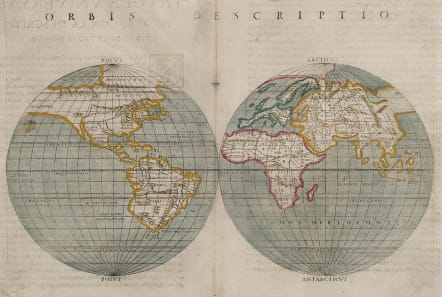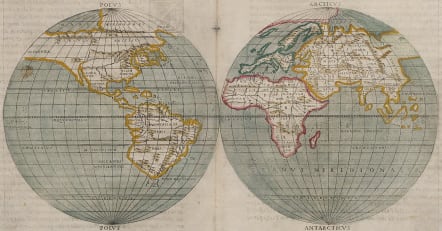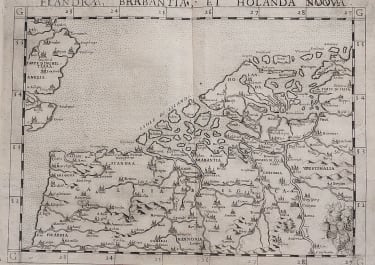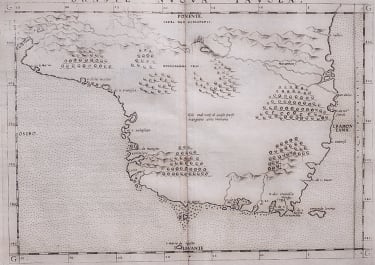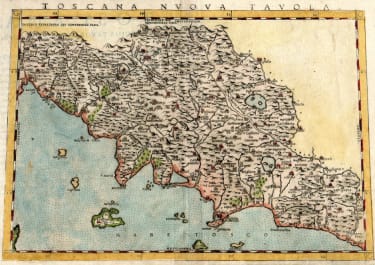ORBIS DESCRIPTIO
£650
State 1 third edition of Ruscelli's important 'Hemispheres' map.
Good early map, the first in an Atlas to show the Old and New Worlds in separate hemispheres, was used by Ruscelli to illustrate his edition of Ptolemy's Geographia, first issued in 1561 This map issued in 1564.
Separate double-hemispherical maps were no innovation but this is the first time that such a representation had been used in an atlas. The map is adapted from the oval projection used for Gastaldi's larger world map.
No southern continent is shown [in the first state], and Ruscelli has clearly marked the broad mass of land joining Asia and America as 'Terra Incognita' and its coastline as 'Littus incognitum.'.
Important innovations were introduced by Ruscelli in his edition of Ptolemy's Geografia one being this map and its division of the map of the world into two hemispheres, of which the right one represents the Old World and the left the New.
North America shown as part of further Asia..Columbus himself, who after four voyages was still convinced on his death bed in 1507 that America was east Asia and the islands in the West Indies lie off the coast of Asia. One of the ironies of history that the admiral himself died ignorant of what he had really accomplished, insisting that he had discovered a province of China.
Later hand as issued
Good strong impression
Very good condition
References: Shirley #110;
From: Girolamo Ruscelli: La Geografia di Claudio Tolomeo Alessandrino, Nuovamente tradotta di Greco in Italiano da Ieronimo Ruscelli..
A 16th century Ptolemy Atlas with 64 engraved maps. Published by Giordano Ziletti in Venice during the year 1564.
code : M5531
Cartographer : RUSCELLI Girolamo
Date : 1564 Venice
Size : 19*27 cms
availability : Available
Price : £650
Girolamo Ruscelli (1500s-1566) was an Italian polymath, humanist, editor, and cartographer active in Venice during the early 16th century. Ruscelli is best known for his important revision of Ptolemy's Geographia, which was published post humously in 1574. It is generally assumed that Alexius Pedemontanus was a pseudonym of Girolamo Ruscelli. In a later work, Ruscelli reported that the Secreti contained the experimental results of an ‘Academy of Secrets’ that he and a group of humanists and noblemen founded in Naples in the 1540s. Ruscelli’s academy is the first recorded example of an experimental scientific society. The academy was later imitated by Giambattista Della Porta, who founded an ‘Accademia dei Secreti’ in Naples in the 1560s.

